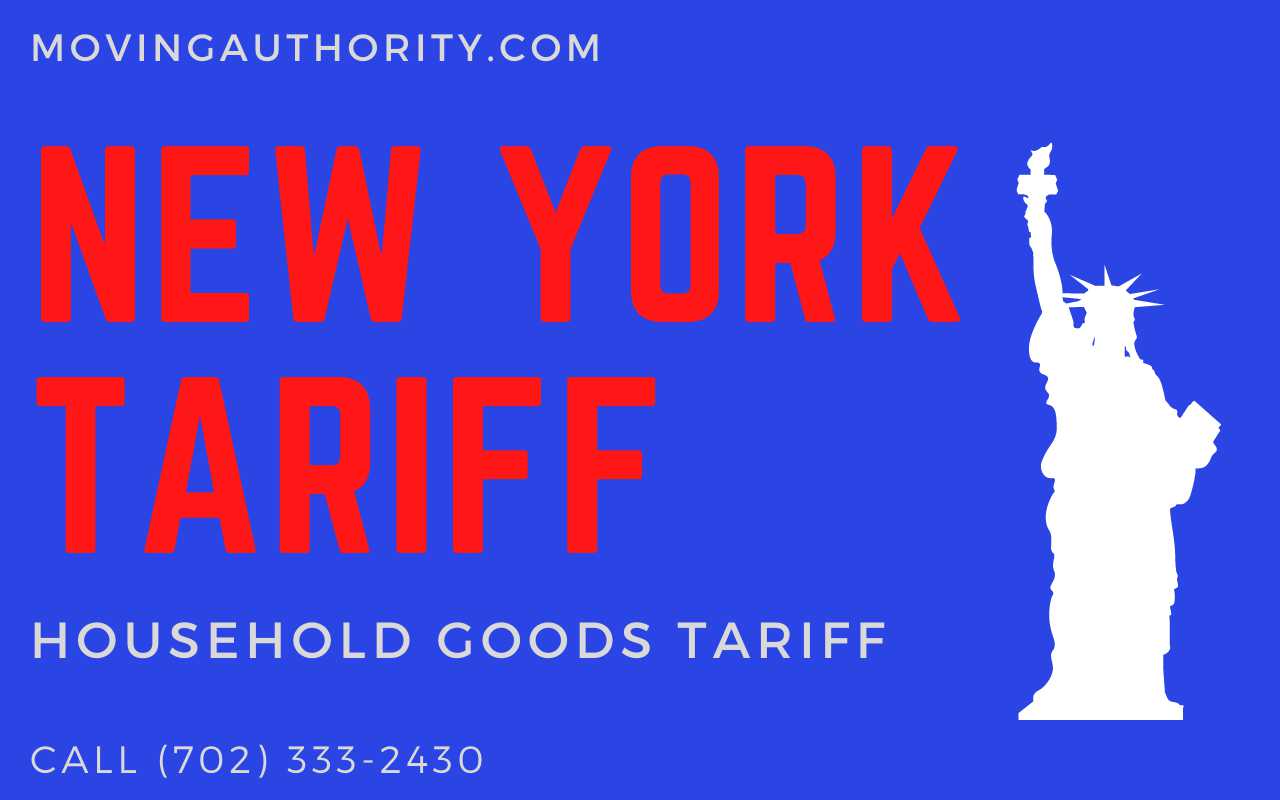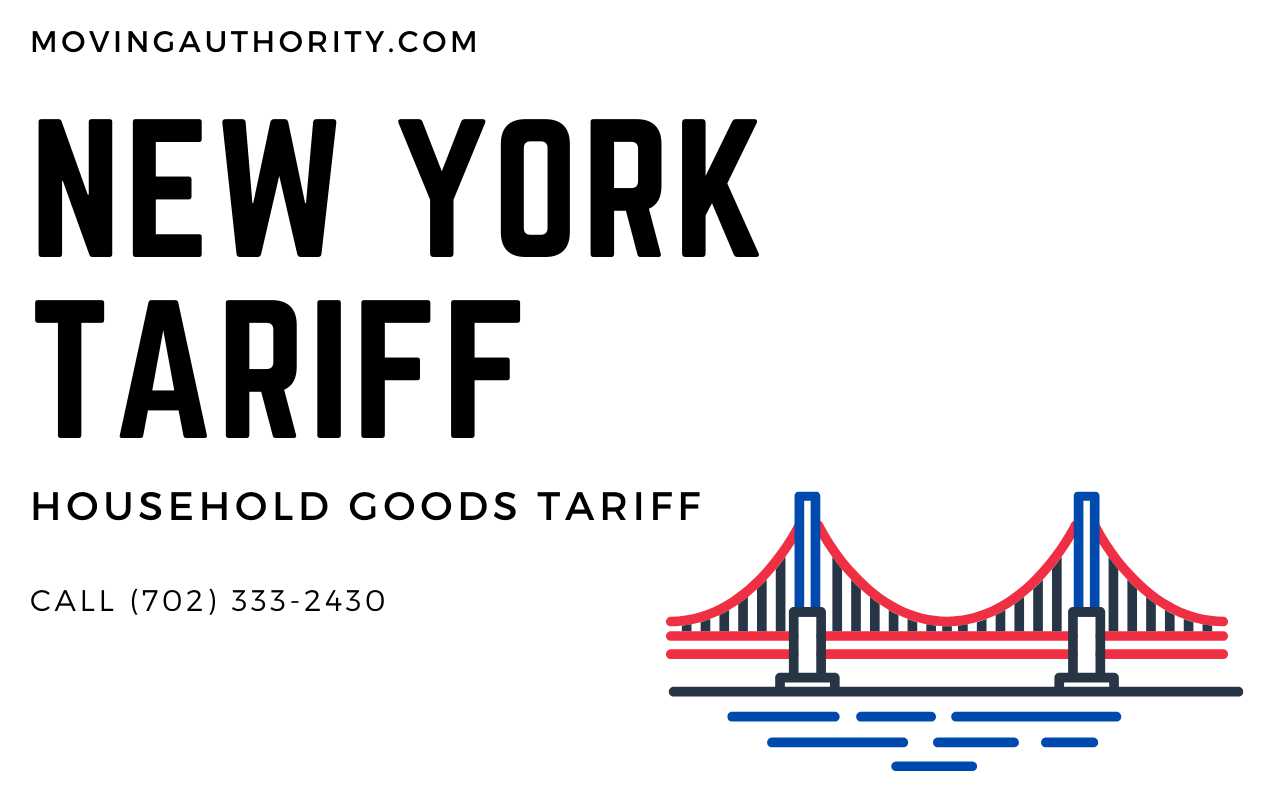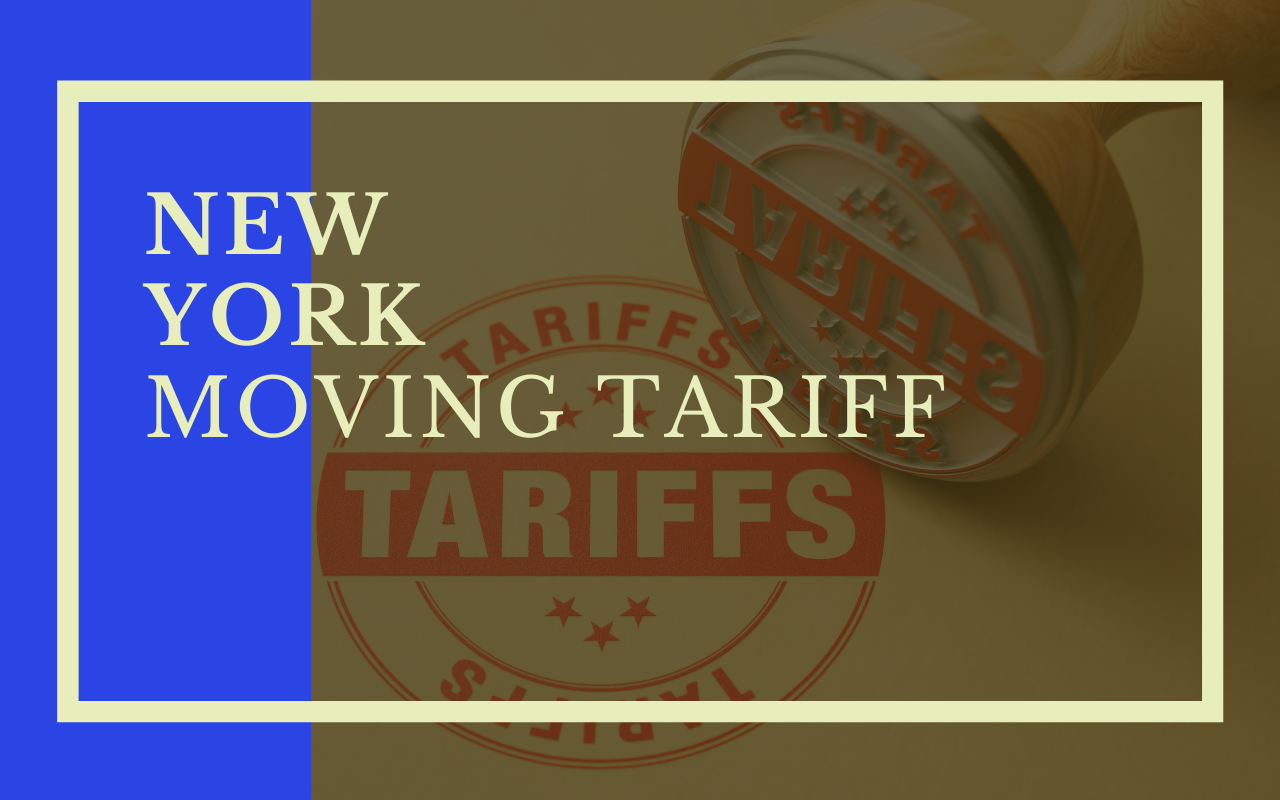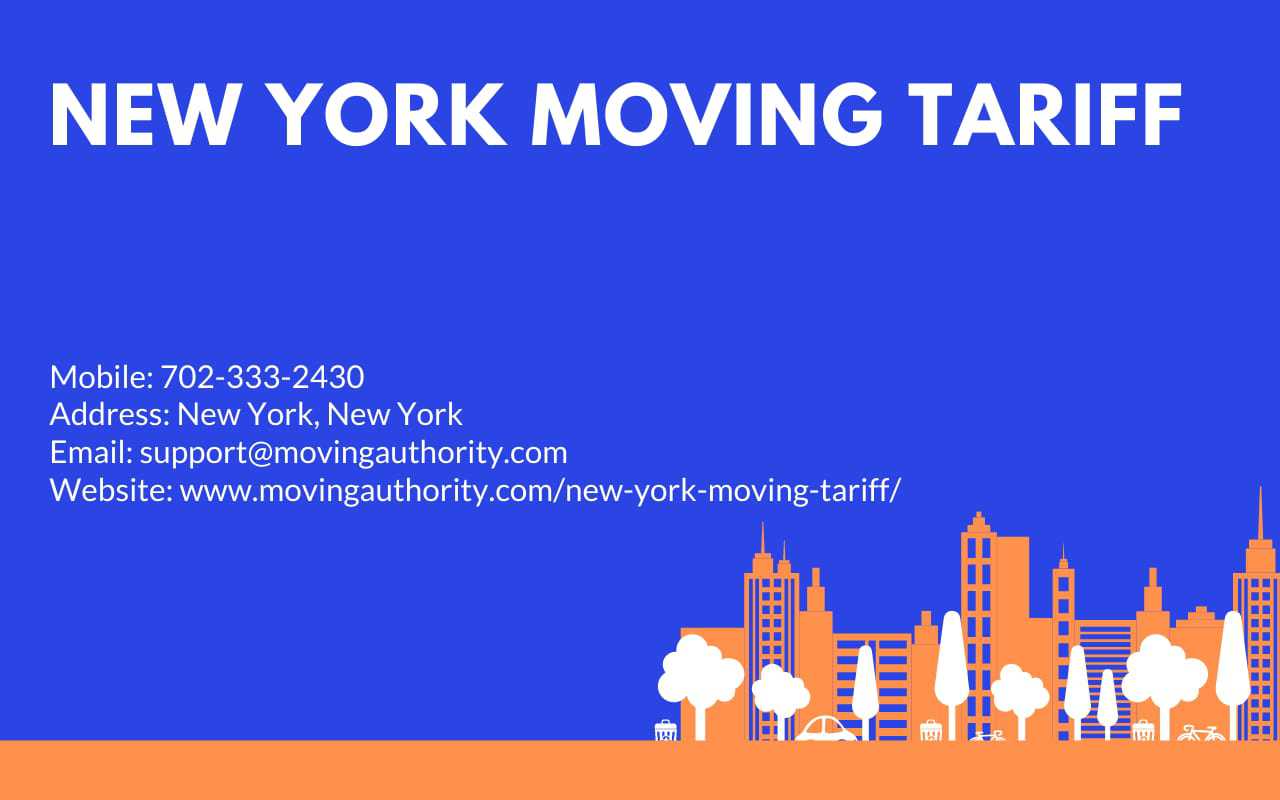

New York Moving Tariff $695
$ 695.00 Only






Product Code: 34
Product Description











Product Code: 34



Are you moving within the state of New York? If so, below are some essential tips that will help you out. Keep the tips in mind when selecting a moving service. It is a requirement for all carriers in the state of New York to have an active Household Goods moving Tariff. This must be provided to the State Department of Transportation for the State of New York. In New York state, Tariff are documents that correlate pricing and laws set out by NYDOT.
Put a lot of thought into which mover you choose.
Your carrier should have proper licensing. That licensing should get issued by the Commissioner of Transportation. Say that you need to verify licensing. You have two options.
1. You can send an email.
2. You can call 518-457-6512.
Make sure that you provide the mover’s exact name.
If you can, try to also provide the NYDOT number.
-Use no fewer than 3 moving estimates. Each mover should provide a physical inspection of your goods within your household.
-Ask each mover to give you a very important booklet. The booklet's called the "Summary of Information.” It explains what a shipper’s (customer’s) rights are.
-Ensure that your mover provides you with the Order for Service. This needs to take place before any goods get moved. The Order for Service will have a specific dollar amount. The amount applies to how much money a customer will have to pay on the day of delivery. This is so a moving company can deliver all goods to the destination.
-Take your time when reading all moving-related documents. Read everything word-for-word before you provide a signature.
-Keep a copy of every document that you have signed in a safe place.
-Create an inventory that lists all household goods that will get moved. Write down the condition of each piece of furniture. Also, write down the estimated number of boxes getting moved.
-Take your time to recognize the liability that applies toward your mover. All movers should explain their official liability policies. They should also tell you how you can buy extra coverage.
-Put thought into the scheduled states for departure and arrival. You want to have some flexibility in case there are delays.
-Provide your movers with phone numbers, emails, and addresses. This is so movers can reach you at any time while en route. Plus, they can also reach you once they arrive at the destination.
-Say that there is loss and/or damage. This means that you need to inform the mover that you will file a written claim.
NEVER:
-Assume that any mover’s written/phone estimate is the true cost of a move.
-Use a mover that does not have proper licensing.
-Assume that a mover will use free packing supplies on your behalf. Packing supplies include boxes, barrels, and cartons. (But say that you hire a mover that provides packing services. This means that it’s the mover’s responsibility to provide “tools of the trade.” Packing services refer to tape, bubble wrap, and other packing materials. These materials can get included in a mover’s packing fee.)
-Assume that a mover will give you any service without a fee. Common moving services include clean-up processes, disconnecting/reinstalling fixtures, appliances, and more.
-Fail to have the exact dollar amount for the Order for Service on the day of delivery. You should have your money in the form of a certified check or cash.
-Sign any moving document that you haven’t read.
-Intrastate Moves That Happen Inside New York State
Filing a tariff-related complaint against a mover within New York State is simple. All complaints should get directed toward the New York State Department of Transportation. (This focuses on intrastate moves that take place within the state of New York.) The Department of Transportation is in charge of licensing.
They provide licenses to all moving organizations that function inside New York State. Say that you have moved within New York State in the last few weeks. But there was some sort of problem with the move. That’s when you need to file a complaint with the New York State Department of Transportation.
That department will then assess the criteria for your move. But do keep the following notion in mind. The NYDOT only regulates moves that begin and end within the state of New York.
Say that your shipment crosses state lines the carrier should have an active MC Number. This means that the jurisdiction of the move does not apply to the NYDOT. Instead, the Federal government must handle the jurisdiction. This applies even if the move began or ended within New York State. So, what should you do in this situation? You have to get in touch with the USDOT’s Federal Motor Carrier Safety Administration. You can reach FMCSA by calling 888-368-7238. More information about interstate moving is on the FMCSA official website.
Say that your move results in damage or loss. This means that you should let your mover know ASAP. But make sure that the notification is in writing. Movers have to respond to all written claims within thirty days. And they have to resolve claims in writing within one- hundred twenty days. There are three main types of resolutions.
1. Payment in full.
2. A claim denial.
3. A compromise settlement.
Do not despair if you're upset about a settlement involving damage/loss.
You can then go to Small Claims Court to attempt to get a resolution. The Department of Transportation does not make formal judgments about damage and loss. Instead, this issue is a civil matter. That’s why the resolution takes place in court. Say that a court provides you with a judgment. Your mover then has sixty days to pay the judgment.
(702) 333-2430
Now, say that you do not get the payment you're entitled to. That’s when the NY DOT will help you collect the judgment.
Say that your moving complaint does not regard damage or loss. The New York State DOT can still attempt to help you. Here are the three most common complaints beyond damage or loss.
1. The moving company did not honor the contract.
2. The moving company did not give you the required paperwork to fill out.
3. The moving company took part in abnormal business practices.
When situations like these happen, you can file a complaint with the New York State DOT.
The first step is to download a Consumer Complaint form. Once you complete the form, you should mail it. The mailing address for the NY State DOT Office of Safety & Security Services is online. When you mail a complaint, include copies of paperwork and communication.
That communication applies between yourself and the mover. You will then receive a letter that informs you how the complaint will get handled. Do you have questions about the complaint process you file a claim against a movers Arbitration Program if they are also holding USDOT number which is a permanent certificate renewed yearly? You will need a National Moving Tariff if you hold a USDOT license.
New York State Tariff: Small Claims Court Information
Sometimes using a small claims court is best when dealing with New York State tariff issues. Say that there is damage or loss that takes place because of a move. This means you should let the moving company know ASAP. And that notification should get converted through writing. The moving company then has thirty days to recognize your claim through writing.
The company then has one-hundred-twenty days to get the claim settled. Say that you feel dissatisfied with the claim resolution. Or, say that you cannot resolve the dispute with the moving company. You can then attempt to find a resolution through the court system. Please contact our organization for more information about the Small claims court.
Take a look at our tariff related information for the states of New Jersey, and Georgia.
Leave a review
Take a few minute to give your value review about our product